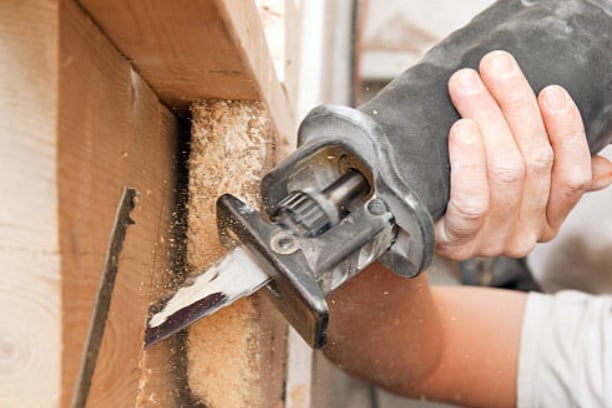Introduction
Welcome to our comprehensive guide on blades for reciprocating saw. Whether you're a professional or a DIY enthusiast, having the right blade can make all the difference when using a reciprocating saw. In this article, we'll provide you with a detailed overview of the different types of blades available and give you practical advice on choosing the right one for your project.
1. The Anatomy of a Reciprocating Saw Blade
Before we delve into the different types of blades, it's important to understand the anatomy of a reciprocating saw blade. A reciprocating saw blade consists of several key components, including the blade body, teeth, gullets, and tang. The blade body is the straight, flat body portion of the blade, while the teeth are the serrated edges that do the cutting. The gullets are the spaces between the teeth that allow debris to be removed, while the tang is the portion of the blade that attaches to the saw.
2. Different Types of Teeth
The type of teeth on a reciprocating saw blade will determine the type of material it can cut effectively. There are three main types of teeth: coarse, medium, and fine. Coarse teeth are best suited for cutting soft materials, such as wood. Medium teeth are suitable for cutting harder materials, such as metal or PVC, and fine teeth are ideal for cutting delicate materials, such as ceramic or fiberglass.
3. Blade Thickness
The thickness of a reciprocating saw blade can also affect its durability and cutting performance. Thicker blades will generally last longer and are more suitable for heavy-duty tasks. On the other hand, thinner blades are more flexible and ideal for cutting curves or intricate shapes.
4. Blade Length
The length of your blade will depend on the thickness of the material you're working with. A longer blade will allow you to make deeper cuts, while a shorter blade is better suited for shallower cuts.
5. Different Materials for Blades
Reciprocating saw blades can be made from a variety of materials, including high-speed steel, carbide-tipped steel, and bi-metal. High-speed steel blades are the most common and are suitable for cutting through wood and metal. Carbide-tipped blades are designed for cutting through harder materials, such as masonry or tile. Bi-metal blades are made from a combination of high-speed steel and carbide and offer the best of both worlds when it comes to cutting versatility and durability.
6. Choosing the Right Blade for the Job
Choosing the right blade for your project is crucial for achieving the best results. Consider the type and thickness of material you'll be cutting, as well as the type of cutting action you'll be using (straight or curved). Refer to the blade packaging or manufacturer's specifications to ensure you select the appropriate blade for the task at hand.
7. Reciprocating Saw Blade Maintenance
To ensure your blades last as long as possible, it's important to take proper care of them. Keep your blades clean and free of debris, and regularly inspect them for signs of wear or damage. Discard any blades that are cracked, bent, or missing teeth. Proper storage is also essential to keep your blades in good condition. Store them in a dry, cool place and avoid leaving them in direct sunlight.
8. Safety Tips
Reciprocating saws are powerful tools that should be used with caution. Always wear appropriate safety gear, including gloves, eye protection, and ear protection. Make sure the blade is securely locked in place before use and avoid using a damaged or defective blade. Always cut away from your body, and keep your hands clear of the cutting area.
9. Frequently Asked Questions
Q: How do I know when my blade needs to be replaced? A: Look for signs of wear, such as dull teeth or chips in the blade.
Q: Can I use a wood blade to cut metal? A: No, using the wrong blade for the job can damage your blade or cause injury. Always use the appropriate blade for the material you're cutting.
10. Conclusion
With so many options available, choosing the right reciprocating saw blade for your project can seem overwhelming. But by understanding the different types of blades available and their unique characteristics, you can make an informed decision that will ultimately save you time, money, and frustration. Remember to prioritize safety and keep your blades in good condition to ensure optimal performance.
blades for reciprocating saw, types of teeth, blade thickness, blade length, materials for blades, blade maintenance, safety tips, choosing the right blade, frequently asked questions, conclusion The Ultimate Guide to Blades for Reciprocating Saw: Everything You Need to Know Learn everything you need to know about blades for reciprocating saw, including types of teeth, blade thickness, blade length, materials for blades, blade maintenance, safety tips, choosing the right blade, and frequently asked questions.


